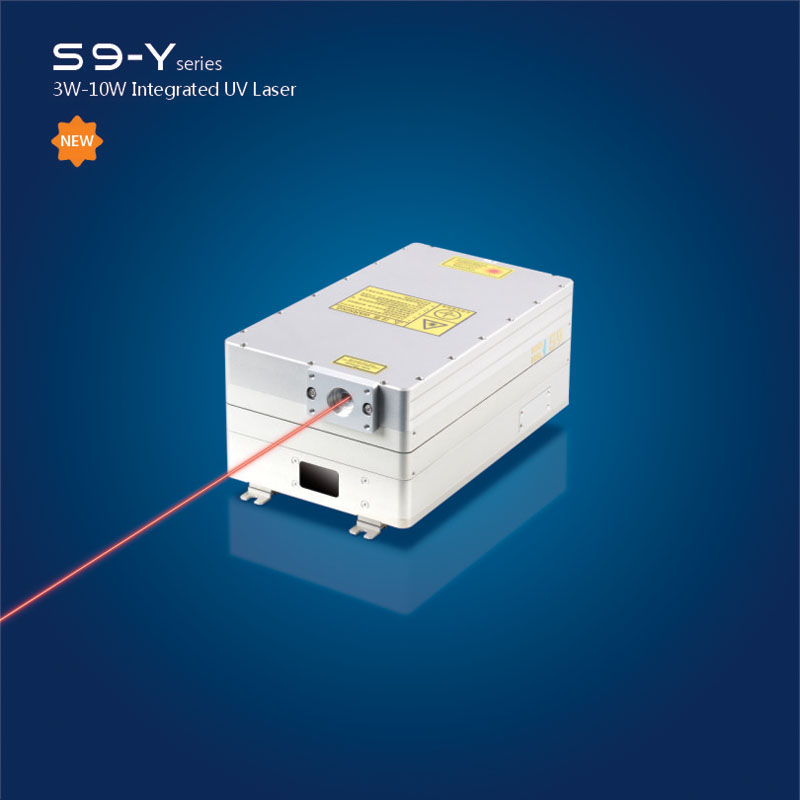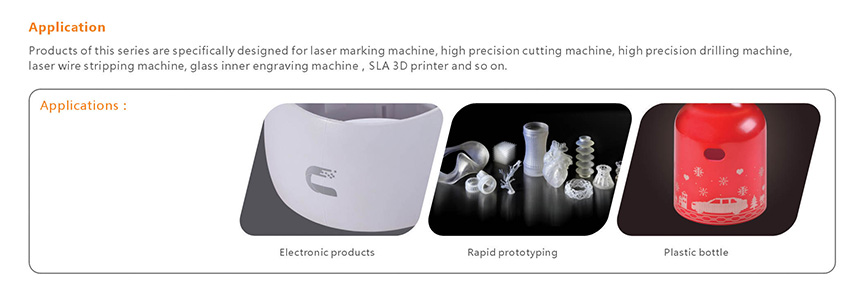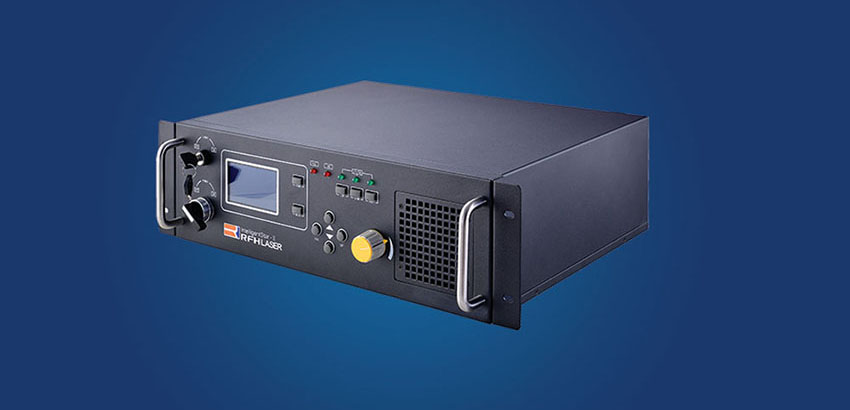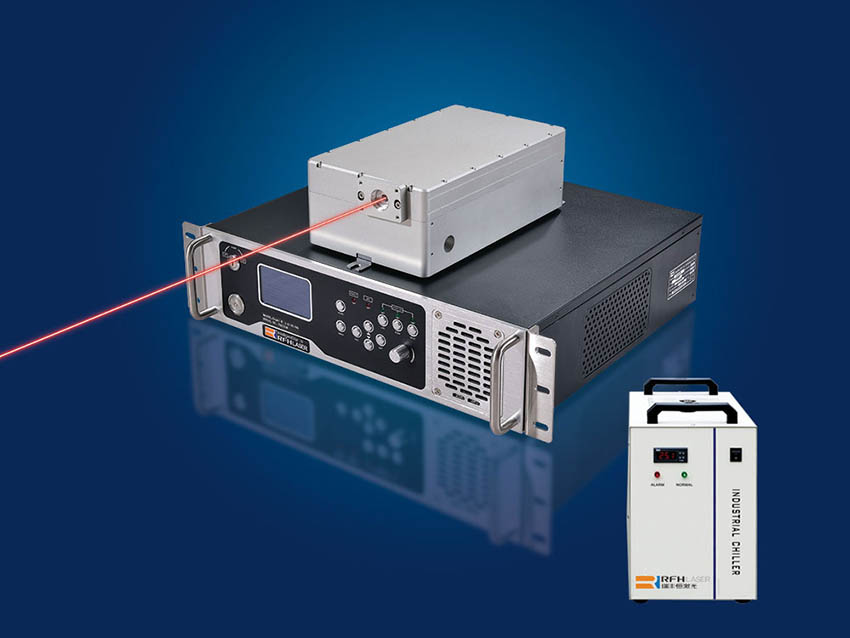
Informe de investigación de mercado de láser de nanosegundo UV de 355 nm China
Dec 05 , 2022Ultraviolet nanosecond lasers output ultraviolet light and lasers with pulse widths ranging from several to hundreds of nanoseconds. They have the advantages of short wavelength, high peak power, high processing accuracy, good focus, and small thermal effects. They are ideal for laser fine micromachining. The mainstream light source in the market is often used for high-quality marking, engraving, cutting, micro-drilling and surface micro-treatment. The 355nm UV nanosecond laser is the most common type of UV nanosecond laser.
Benefiting from the support of policies, the maturity of the upstream and downstream industry chains, the continuous breakthroughs of laser manufacturers in core technologies, and the rapid growth of client demand for high-precision processing, the shipments of nanosecond ultraviolet lasers have continued to increase, and the output power has also increased. High, especially the penetration rate of mid-to-high-end ultraviolet nanosecond lasers developed by domestic manufacturers is getting higher and higher, and full import substitution is just around the corner.
At this time, ultrafast lasers represented by picosecond and femtosecond lasers are capturing the market for ultraviolet nanosecond lasers. Ultrashort pulses output by ultrafast lasers can obtain extremely high peak power with relatively low pulse energy. The market is paying more and more attention, and it has been more and more deeply applied in the field of industrial micromachining.
Facing the menacing ultrafast lasers and the wave of import substitution of high-end ultraviolet nanosecond lasers, 355nm ultraviolet nanosecond lasers ushered in a "big change".
Advantages of UV nanosecond lasers in fine micromachining
Laser processing is the use of high-energy-density laser beams to interact with substances to complete cutting, drilling, surface micro-processing and other fine micro-processing according to the duration of action. After decades of hard work and development, laser processing has covered almost all mainstream high-end manufacturing fields.
Laser fine micromachining generally refers to the process of laser processing material devices with micron-level precision. The 355nm ultraviolet nanosecond laser has the advantages of high single-photon energy of ultraviolet light, high material absorption rate, good focusing performance, narrow pulse width, etc., and occupies a place in the field of fine micromachining.

In view of this, as early as its establishment, RFH LASER Company established a 355nm ultraviolet nanosecond laser, which has excellent beam quality (M²<1.2), a pulse width of about 25ns, and a focused spot diameter of only about 20 microns. The density laser beam can break the chemical bonds of some materials. It is a "cold" processing process, and the heat generated is very small, which is not available in infrared light. The specific performance is low carbonization, small chipping, and micro cracks. Less, no melting, no burning, etc., even without washing, grinding, polishing, etc., which effectively guarantees the processing quality, improves the yield of the workpiece while reducing costs and increasing efficiency, which is significant in promoting the transformation and upgrading of domestic manufacturing industries and the development of high-end manufacturing industries major.
Good development trend and wide application space
Therefore, over the years, the state has continuously introduced relevant policies to support the development of the laser industry. By encouraging laser companies to master core technologies through independent innovation, the deep integration of laser technology and high-end manufacturing has been promoted, and a complete laser manufacturing industry system has been built. Under the support of intensive policies, the shipments of ultraviolet nanosecond lasers continued to rise. Statistics show that in 2015, my country shipped 2,035 UV lasers, 7,800 in 2016, 17,465 in 2019, and 21,000 domestic UV nanosecond lasers in 2020. The year-by-year growth trend is driven by the continuous strong downstream demand. It is expected that the shipment will continue to grow rapidly. By 2024, the shipment of domestic ultraviolet nanosecond lasers in my country may exceed 35,000 units.
In the current market segment, UV nanosecond lasers cover 3W, 5W, 10W, 15W, 20W, and 30W, 40W and other low, medium and high-grade products according to the output power level, among which 3W, 5W and 10W nanosecond UV laser technology is stable and mature , there are already products that are completely localized and can be produced on a large scale, realizing a stable and reliable localization replacement that can meet the needs of domestic production. 3W and 5W are mainly used for laser marking, 3D printing, etc., and 10W and above can be used for wafers, silicon wafers, peeling, sapphire and other thin, hard and brittle materials, heat-sensitive film materials, solar cells, and flexible circuit boards FPC It is a reliable and ideal tool for drilling, etching, cutting, scribing and other application fields such as PBC and PBC.
The long road to domestic substitution and the cut-off of ultrafast lasers

Although the shipment data is impressive and the development is remarkable, it faces many problems. The main manifestations are:
On the one hand, mid-to-high-end nanosecond ultraviolet lasers of 15W and above are still more or less limited by foreign laser giants, and the same type of products have a large gap with foreign countries in terms of stability, performance and industrial production, which also leads to high prices , limiting the application scenarios. Domestic manufacturers are still on the long journey of catching up and gradually approaching the world's advanced level, but it will still take time to fully realize localization replacement.
On the other hand, ultrafast lasers represented by picosecond and femtosecond lasers have developed rapidly and have been mass-produced and put into commercial use. Ultra-narrow pulse width, high-power picosecond and femtosecond lasers have better processing effects and higher efficiency. Process all materials, including metals, semiconductors, glass, sapphire, ceramics, polymers, composite materials, thin films, ITO films, solar cells, etc. Especially for picosecond lasers, compared with femtosecond lasers, it does not need to stretch and compress pulses for amplification, so picosecond lasers are relatively simple to design, more cost-effective, and more reliable in performance, such as when the pulse width is around 10ps , the use of this ultrafast laser pulse can achieve a very ideal laser "cold" processing effect, and can obtain a smaller processing size and higher processing accuracy.

La tecnología láser ultrarrápida con ventajas incomparables ha ganado una buena oportunidad de desempeño en el mercado. Las estadísticas muestran que los láseres ultrarrápidos nacionales de picofmtosegundo continúan desarrollándose y los envíos han aumentado de 40 unidades en 2015 a 2100 unidades en 2020, un aumento de más de 50 veces en cinco años, y aumentarán a 3300 unidades en 2021. Para 2022, los envíos pueden llegar a 4.180 unidades, compitiendo aún más por el mercado de microprocesamiento fino que originalmente pertenecía a los láseres ultravioleta de nanosegundos.

En ascenso, buscando nuevos puntos de crecimiento.
En la actualidad, los países desarrollados de Europa y los Estados Unidos básicamente han completado la mejora de las artesanías tradicionales con procesamiento láser en el proceso de producción y fabricación de las principales industrias manufactureras a gran escala, y han entrado en la era "ligera". Como el país manufacturero más grande del mundo, la tasa de penetración de aplicaciones láser de mi país es relativamente baja y aún se encuentra en etapa de crecimiento. Con el rápido desarrollo de varias industrias, la necesidad de modernización industrial y el impacto de las políticas macro, es propicio para la liberación continua de la demanda del mercado de láseres ultravioleta de nanosegundos en mi país y expandir aún más la escala de aplicaciones industriales.
Además, afectada por la epidemia y el suministro de energía causado por la guerra, China, que tiene la cadena industrial más completa del mundo, también atraerá una mayor transferencia de fabricación global al país, y seguirán surgiendo nuevas necesidades de producción y escenarios de aplicación. emergen, aumentando la demanda de procesamiento láser.
En particular, con el vigoroso desarrollo de nuevas energías, paneles de visualización, electrónica de consumo, circuitos integrados, semiconductores, 5G, macrodatos y otras industrias, es necesario procesar una gran cantidad de materiales duros, delgados, quebradizos y sensibles al calor, como vidrio, obleas de silicio y sustratos de zafiro. Materiales, piezas polares de batería, películas PI, PFC, etc., esta es el área en la que los láseres UV de nanosegundos son buenos. Para lograr una menor carbonización y una eficiencia más rápida, los láseres UV de nanosegundos de gama media a alta se han vuelto muy populares en el mercado. En este sentido, los fabricantes de láser también realizan constantemente innovaciones tecnológicas, explorando constantemente láseres ultravioleta de nanosegundos de mayor frecuencia, ancho de pulso más estrecho y mayor potencia, buscando nuevos puntos de crecimiento.
Además, en los últimos años, los fabricantes nacionales de láser han ido en ascenso, investigando y desarrollando constantemente problemas clave, promoviendo láseres con derechos de propiedad intelectual independientes básicos, mejorando gradualmente las cadenas industriales ascendentes y descendentes y formando un sistema industrial, reduciendo la dependencia de Dispositivos centrales importados. En el "ciclo interno económico interno" Juega un papel.